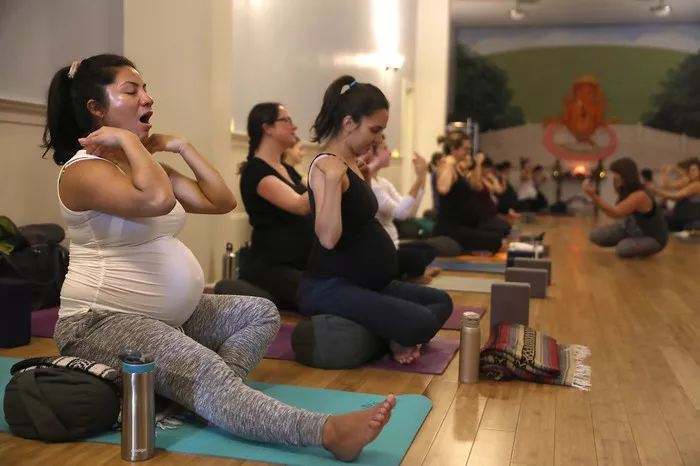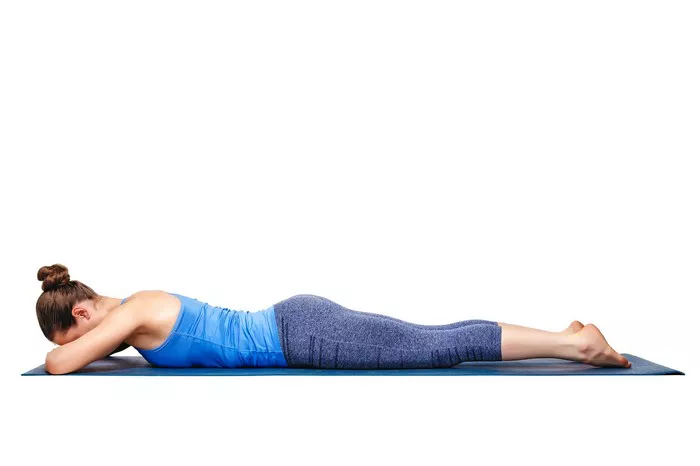Karma Yoga, often referred to as the “Yoga of Action,” is a profound aspect of the ancient system of yoga that focuses on selfless service, mindful action, and the idea of performing one’s duties without attachment to the outcomes. It’s a spiritual practice rooted in the philosophy of doing good, not for the sake of personal gain but to serve humanity, improve the world, and achieve inner peace.
In this article, we will explore how to practice Karma Yoga, its benefits, its philosophical underpinnings, and how it can enrich your life. This practice does not require you to abandon your life, your work, or your responsibilities, but instead, it invites you to transform the way you approach them.
What is Karma Yoga?
Karma Yoga is one of the four main paths of yoga, which includes Bhakti Yoga (the path of devotion), Jnana Yoga (the path of wisdom), and Raja Yoga (the path of meditation). Unlike other forms of yoga, which might involve specific postures, breathing techniques, or meditations, Karma Yoga is centered around actions and how we approach those actions in daily life.
The term “Karma” refers to the actions or deeds we perform, and “Yoga” means union or connection. So, Karma Yoga essentially means the union achieved through selfless actions, where one surrenders the fruits of their work to a higher purpose. It teaches that every action we take has consequences (karma), but by practicing non-attachment to the results, we can live harmoniously with the world around us.
The philosophy behind Karma Yoga can be traced back to the Bhagavad Gita, a 700-verse Hindu scripture that is part of the Indian epic Mahabharata. In the Gita, Lord Krishna explains to the warrior prince Arjuna that he should act selflessly, without attachment to the outcomes, and dedicate his actions to the divine. This teaching is not just about grand gestures but applies to every action in our lives.
The Core Principles of Karma Yoga
To practice Karma Yoga, there are several core principles and philosophies that guide the practitioner. These principles can help one begin integrating this yoga into their everyday life.
1. Selfless Service (Seva)
One of the most important aspects of Karma Yoga is the concept of “Seva,” or selfless service. This involves doing work without any expectation of reward or recognition. The essence of Seva is to act out of love and compassion, not for personal gain, but for the benefit of others.
Whether it’s helping a friend, contributing to a community project, or simply doing your job with care and attention, Karma Yoga teaches that all actions, no matter how small, can be acts of service. By doing things for others, we step away from ego-driven motives and embrace a broader perspective of interconnectedness and mutual support.
2. Non-Attachment to the Results (Nishkama Karma)
In Karma Yoga, non-attachment is a key concept. It refers to performing actions without being overly concerned about the results. Often, we get so attached to the outcomes of our efforts—whether success or failure—that it can lead to frustration, stress, or even disappointment.
Karma Yoga encourages us to focus on doing the best we can, without the burden of trying to control the outcome. It is about letting go of the need to “own” the results of our actions. The practice asks us to act in the present moment, with full attention and dedication, while accepting that we do not have control over everything that happens.
This principle is deeply connected to the idea of letting go of ego. When we stop expecting specific results, we can act with a purer, more genuine intention, free from personal desires or insecurities.
3. Mindful Awareness in Action (Awareness of the Present Moment)
Mindfulness, or the ability to be fully present in whatever we are doing, is another key element of Karma Yoga. Whether we are cooking, working, cleaning, or interacting with others, the practice teaches us to engage fully with the task at hand.
This mindfulness allows us to connect deeply with the present moment, turning even mundane activities into spiritual practices. By focusing on the process and not just the end goal, we cultivate greater attention, presence, and understanding in our actions.
4. Purification of the Mind and Heart
As you engage in Karma Yoga, the goal is not just to perform actions but to purify your own mind and heart. This happens through the discipline of acting selflessly, without attachment, and with compassion for others. Each action performed with a pure heart helps to dissolve the ego and purify negative emotions like greed, anger, and selfishness.
By practicing Karma Yoga, we begin to develop a sense of humility and compassion, which ultimately helps us become more aligned with our true nature.
5. Surrendering to the Divine Will
In the context of Karma Yoga, surrender does not mean passivity or inaction. Instead, it involves offering one’s actions to a higher power, whether it’s the divine, the universe, or simply a greater good. This surrender involves trust and faith that the universe has its own plan, and we are part of that grand design.
When we act in alignment with our highest values, we are offering ourselves as instruments of the divine will. This is an essential aspect of Karma Yoga—acting with the understanding that we are serving a purpose beyond ourselves.
How to Practice Karma Yoga in Daily Life
While the philosophical principles of Karma Yoga are essential, practicing it in daily life requires conscious effort and mindfulness. Here are some practical steps you can follow to incorporate Karma Yoga into your everyday routine.
1. Start with Small Acts of Service
Begin by identifying opportunities for selfless service in your daily life. These don’t have to be monumental acts like volunteering at a shelter or donating large sums of money. Selfless service can take the form of small actions, such as offering a helping hand to a neighbor, cooking a meal for a loved one, or simply listening to someone who needs support.
The key is to do these actions with a sincere heart and with no expectation of anything in return. This helps build a habit of selflessness, which will strengthen your connection to the core tenets of Karma Yoga.
2. Let Go of Attachment to Outcomes
As you perform tasks in your daily life, practice letting go of attachment to the outcomes. For example, when working on a project, focus on giving your best effort, but release the desire to control how things turn out. Whether the results are successful or not, trust that you did your best, and that’s all that matters.
This practice can extend to everything in your life, from your career to your relationships. By reducing attachment to outcomes, you can experience more peace and less stress.
3. Engage in Mindful Action
Make a conscious effort to be fully present in everything you do. Whether it’s something as simple as washing dishes or working on a report, bring your full attention to the task. This mindfulness turns every action into a form of meditation, as you focus your mind and energy on the present moment, without distractions.
You can practice mindful action by focusing on your breath, maintaining awareness of your body’s movements, and staying grounded in the task at hand.
4. Serve with Love and Compassion
The essence of Karma Yoga is love and compassion. When performing any act of service, do it with a sense of kindness, empathy, and understanding. Whether you’re helping someone in need or simply assisting a colleague at work, approach it with a heart full of compassion.
By serving with love, you help not only others but also yourself. Your actions become more aligned with your spiritual values, and you begin to experience greater satisfaction and inner peace.
5. Cultivate Humility
Karma Yoga requires a humble heart. Humility does not mean thinking less of yourself, but rather thinking of yourself less. It’s about recognizing that we are all interconnected, and the actions we perform are part of a larger cosmic dance.
As you practice Karma Yoga, remind yourself that every person you encounter, and every task you undertake, offers a chance for personal growth. Humility allows you to perform your duties with grace, without the need for recognition or praise.
6. Surrender to the Divine Will
Finally, remember to offer your actions to a higher purpose. When you perform selfless service or engage in any action, do so with the intention of serving the greater good. Recognize that everything you do is part of the divine plan, and trust that your actions will have a positive ripple effect.
You can practice this surrender by dedicating each of your actions to the divine or simply by acknowledging that your work, however small, contributes to the greater good of humanity.
The Benefits of Practicing Karma Yoga
Practicing Karma Yoga can have numerous benefits, both on the physical and spiritual levels. Some of the key benefits include:
Inner Peace: By letting go of attachment to results and focusing on selfless service, you can experience greater peace and tranquility.
Reduced Stress: When you stop obsessing over outcomes and embrace the present moment, you reduce unnecessary stress and anxiety.
Increased Compassion: Selfless action fosters compassion and empathy, deepening your connections with others.
Spiritual Growth: Karma Yoga is a path to spiritual enlightenment, helping you purify the mind and cultivate virtues like humility, love, and patience.
Enhanced Relationships: Acting from a place of love and service strengthens relationships, fostering a sense of unity and connection.
Conclusion
Karma Yoga is a powerful spiritual practice that emphasizes the importance of selfless action, mindfulness, and devotion to a higher purpose. By embracing the principles of Karma Yoga in our everyday lives, we can cultivate inner peace, deepen our connection with others, and contribute positively to the world around us.
Remember, the practice of Karma Yoga does not require renouncing the world or retreating from life’s responsibilities. Instead, it invites us to transform the way we approach our duties, challenges, and relationships, allowing us to live more consciously, with a sense of purpose and compassion.
Incorporating these teachings into your daily routine is a journey that requires patience and dedication. However, through consistent practice, you will begin to notice the profound impact of Karma Yoga on your life, and experience the joy and fulfillment that comes from acting selflessly and in service to the greater good.
Related topics:

























